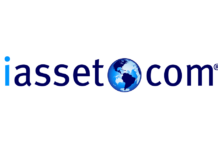It’s great to be your own boss, calling your own shots. There’s great satisfaction in pursuing your own dreams and passions. With that comes the responsibility and obligation to abide by certain rules and regulations. As a small business owner, managing finances properly is vital to your long-term success. .
The repercussions of failing to manage your finances can be very significant – especially when you consider the penalties for making mistakes. If you are an employer, for instance, you have to know and follow the Canada Revenue Agency (CRA) rules around payroll so you can collect, report and file payroll taxes properly.
Here’s what every small business needs to know:
1) Are you an employer?
You are an employer if you have employees. But it’s entirely possible to have workers who are not employees, so you need to know the difference between them. The Canada Revenue Agency’s RC4110 – Employee or Self-Employed guide explains the difference.
2) If you are an employer, you need a payroll account number with the Canada Revenue Agency.
If your business already has a business number (BN), all you need to do is add a payroll account to your existing BN. If your business doesn’t have a BN, you will need to register for a BN and a payroll account. It’s not difficult and the CRA website explains how to register for a business number.
3) Forms to be filled when you hire employees and when employees leave your company
When you hire an employee, you need to get their Social Insurance Number (SIN) and have them complete Form TD1, Personal Tax Credits Return, which is used to determine how much tax will be deducted from their employment income. You should keep this on file and ask your employees to submit a new form to you at the start of every year.
When an employee leaves your company (or has any other interruption of earnings), you will need to fill out a Record of Employment.
Using an online payroll service like PaymentEvolution Payroll will make creating and filing these forms fast and easy.
4) You need to deduct the appropriate amounts of CPP (Canada Pension Plan) contributions, EI (Employment Insurance) premiums, and income tax deductions from employees’ pay cheques, as well as calculating your share of CPP and EI for every payroll.
The CRA Calculating Deductions guide provides the manual details. Using a cloud-based payroll service will greatly simplify these calculations and help you maintain a proper history for reporting purposes.
5) Amounts deducted from employee pay cheques along with your share of CPP contributions and EI premiums need to be remitted to the Canada Revenue Agency, accompanied by the appropriate form.
As due dates vary depending on what type of remitter you are, you’ll want to visit this CRA page for more information. To ensure you remit on time (and avoid some stiff penalties) consider using an electronic payment service to automate these for you.
6) You will need to complete and file CRA information returns annually.
Each year you will need to complete a T4 slip for each employee, and a T4 Summary which you will send in to the Canada Revenue Agency by the end of February, and send a copy of the appropriate T4 slip to each employee. See the CRA’s T4 – Information for Employers. Modern payroll services offer employee self-service sites likePayChequer.com
7) You must keep adequate records and these must be kept for six years.
“Adequate” means that your records have to “provide enough details to determine all your tax obligations and entitlements”. You also need to keep the original documents to support your records.
8) When you close your business, you must also close your account.
Closing your payroll account means following certain prescribed steps by certain dates -this guide outlines the steps you need to follow when your business stops operating.












